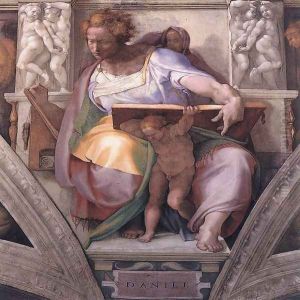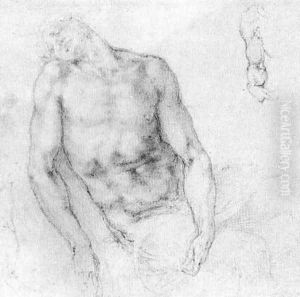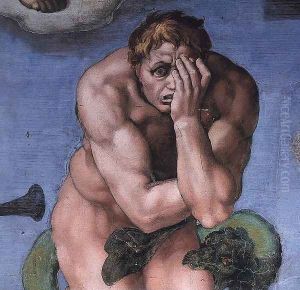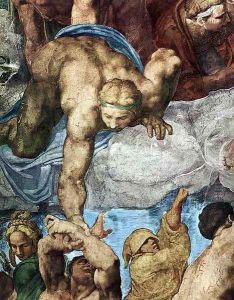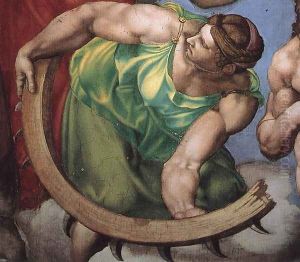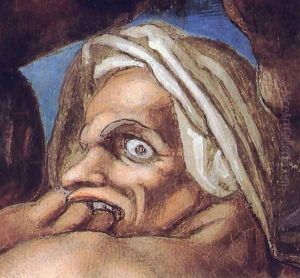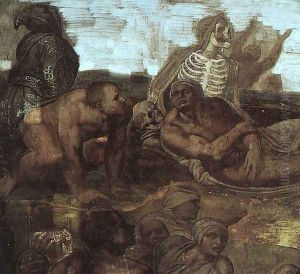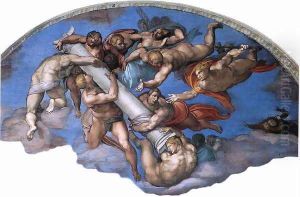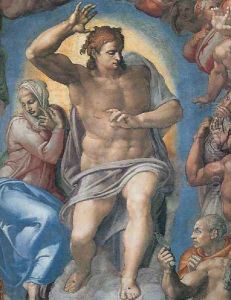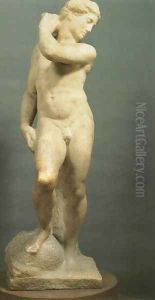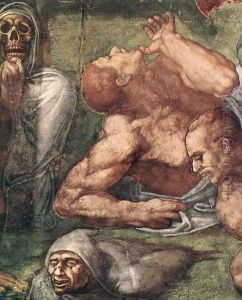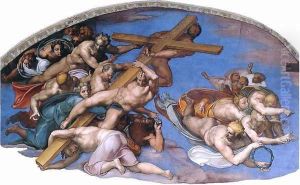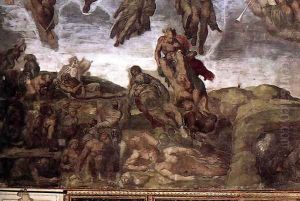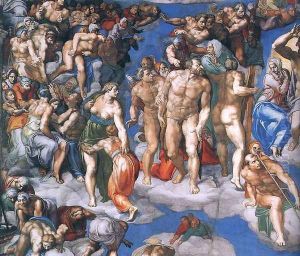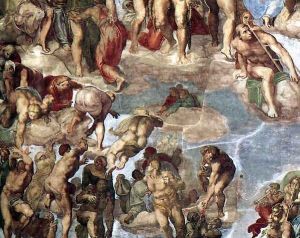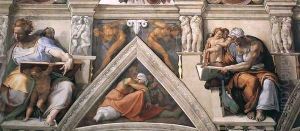Michelangelo Buonarroti Paintings
Michelangelo di Lodovico Buonarroti Simoni, known simply as Michelangelo, was an Italian sculptor, painter, architect, and poet of the High Renaissance born in the small town of Caprese, Italy. He is celebrated for his artistic versatility and contributions to the development of Western art, which have established him as one of the greatest artists of all time. Michelangelo's works are characterized by their detailed human forms and emotional expressiveness.
Michelangelo was born on March 6, 1475, into a banking family that had fallen on hard times. He was apprenticed at the age of 13 to the painter Domenico Ghirlandaio. He later studied at the sculpture gardens of the Medici family, where he gained exposure to classical statuary. His talent was recognized early on, and he was commissioned to create several works while still a young man, including the 'Pietà' for St. Peter's Basilica and 'David' which stood as a symbol of Florentine freedom.
Throughout his life, Michelangelo was involved in numerous projects, many of which were never completed. His most significant works include the statues of 'David' and 'Moses,' the 'Pietà,' the Sistine Chapel ceiling, and The Last Judgment. Each of these works showcases his ability to depict the human body with unrivaled skill and to infuse his subjects with powerful emotion.
He also made major contributions to architecture, notably as the chief architect of St. Peter's Basilica in Rome from 1546 until his death. His architectural designs are noted for their sense of grandeur and for their incorporation of Michelangelo's sculptural sensibilities.
Michelangelo's influence extended beyond his lifetime, deeply affecting the development of Western art. His contemporaries recognized his extraordinary talent, and he was the first Western artist whose biography was published while he was alive. His work was widely copied by other artists and continues to inspire to this day.
Michelangelo died in Rome on February 18, 1564, at the age of 88. His body was taken from Rome for interment at the Basilica of Santa Croce, fulfilling his last request to be buried in his beloved Florence.
![Ceiling of the Sistine Chapel [detail] II](https://www.niceartgallery.com/imgs/219926/s/michelangelo-buonarroti-ceiling-of-the-sistine-chapel-detail-ii-b99c7c2b.jpg)
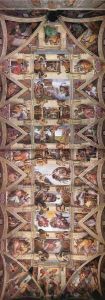
![Ceiling of the Sistine Chapel [detail] I](https://www.niceartgallery.com/imgs/219723/s/michelangelo-buonarroti-ceiling-of-the-sistine-chapel-detail-i-54d9fd21.jpg)
![Ceiling of the Sistine Chapel [detail]](https://www.niceartgallery.com/imgs/219786/s/michelangelo-buonarroti-ceiling-of-the-sistine-chapel-detail-3d46d0a5.jpg)
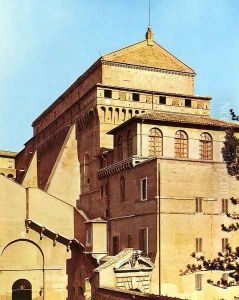
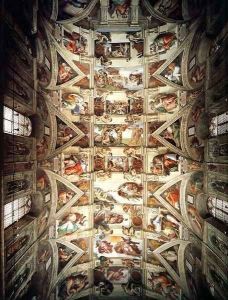
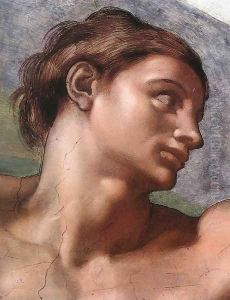

![Ceiling of the Sistine Chapel: Ignudi, next to Separation of Land and the Persian Sybil [right]](https://www.niceartgallery.com/imgs/219895/s/michelangelo-buonarroti-ceiling-of-the-sistine-chapel-ignudi-next-to-separation-of-land-and-the-persian-sybil-right-b762e264.jpg)
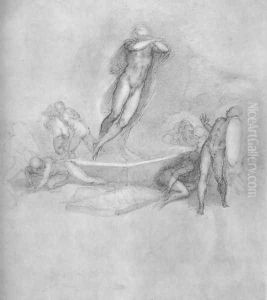
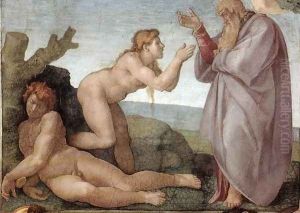
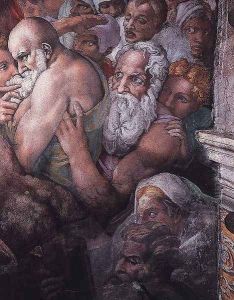
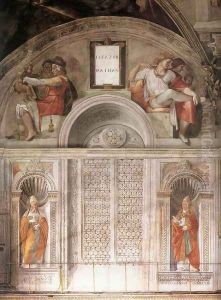
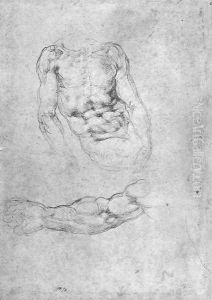
![The Last Judgement [detail]](https://www.niceartgallery.com/imgs/219790/s/michelangelo-buonarroti-the-last-judgement-detail-c5fde0f0.jpg)
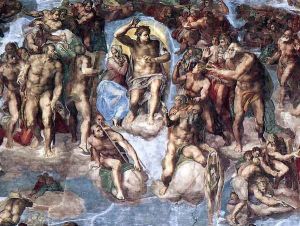
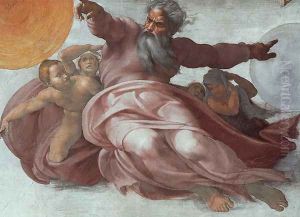
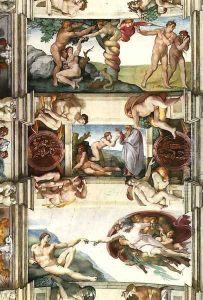
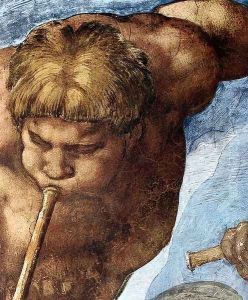
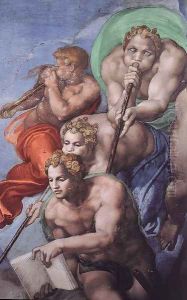
![Ceiling of the Sistine Chapel: Ignudi, next to Separation of Land and the Persian Sybil [left]](https://www.niceartgallery.com/imgs/219953/s/michelangelo-buonarroti-ceiling-of-the-sistine-chapel-ignudi-next-to-separation-of-land-and-the-persian-sybil-left-66525702.jpg)
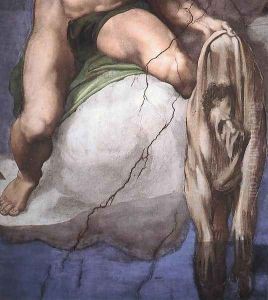
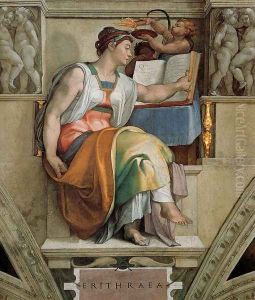

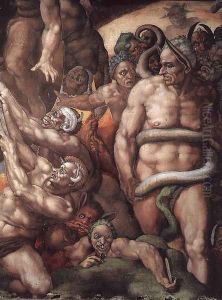
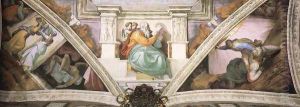
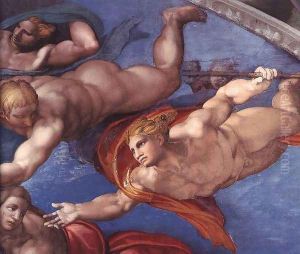
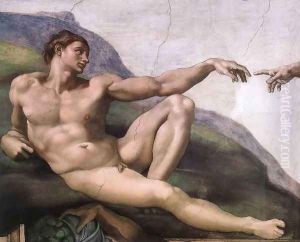

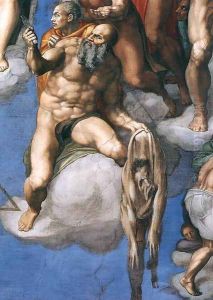
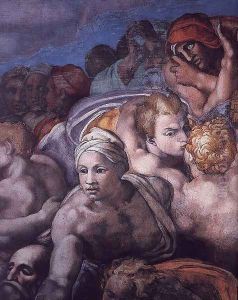
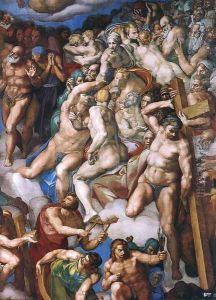

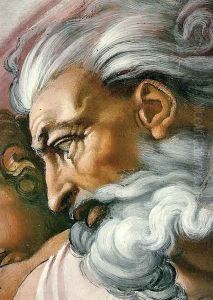
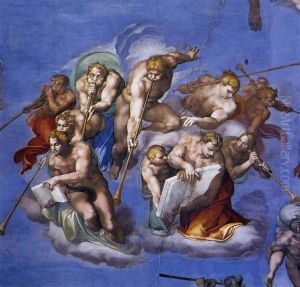
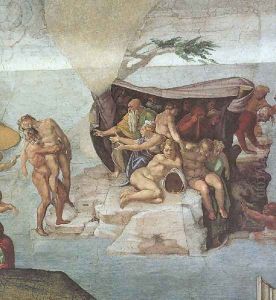
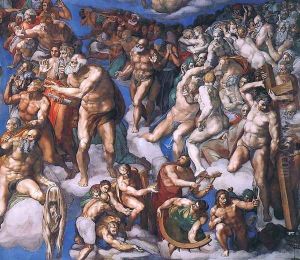

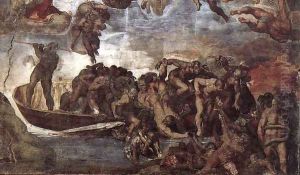
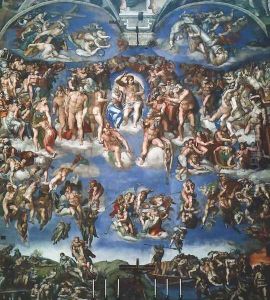
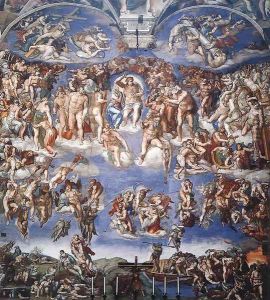
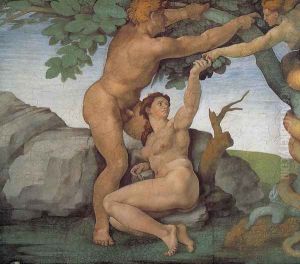
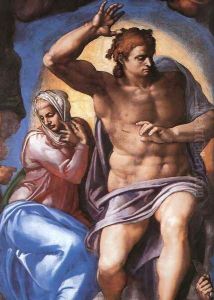
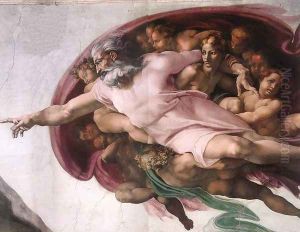

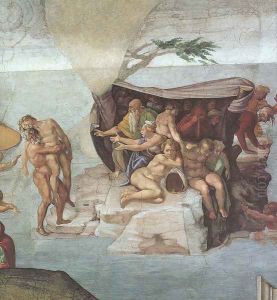
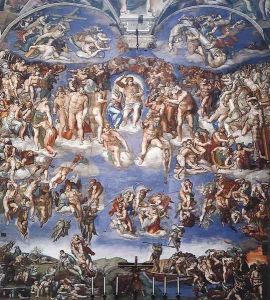
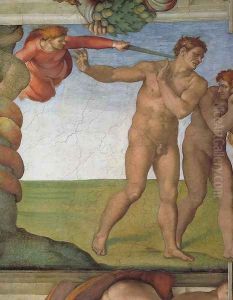
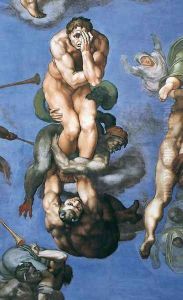
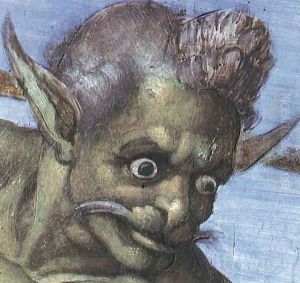
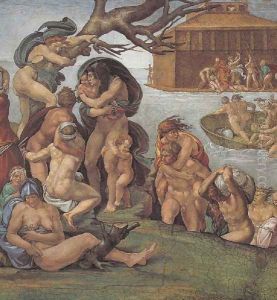
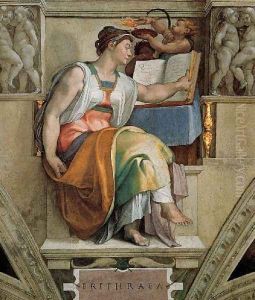
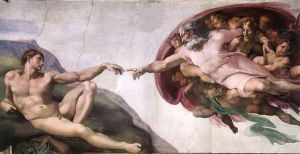
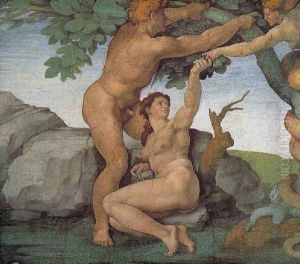
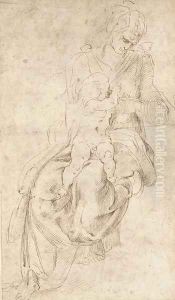
![Ceiling of the Sistine Chapel: Genesis, The Creation of Adam [Adam's face]](https://www.niceartgallery.com/imgs/219749/s/michelangelo-buonarroti-ceiling-of-the-sistine-chapel-genesis-the-creation-of-adam-adams-face-adef7b80.jpg)
